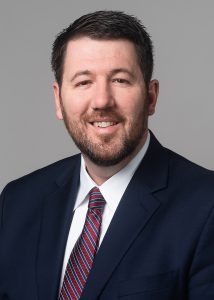Subscriber Benefit
As a subscriber you can listen to articles at work, in the car, or while you work out. Subscribe NowMore than 500 college and high school students gathered at Trine University on Wednesday to listen to oral arguments in front of the Indiana Supreme Court.
The students got an especially heavy case — involving a man who had too much to drink and later killed someone in a motor crash — and listened for 40 minutes as lawyers talked about the Dram Shop Act and what it might mean for a path to recovery under common law for the plaintiff.
But the mood turned lighter when arguments finished, with students lining up at a pair of microphones in the T. Furth Center for Performing Arts to ask judges about everything from how they entered to the legal field to the role of politics and public opinion.
A Trine student asked about the qualifications to become a justice, and Indiana Chief Justice Loretta Rush turned the question to Justice Derek Molter, the court’s most junior member who joined in September 2022.

“I can demonstrate the bare minimum,” he joked.
That prompted another question about how the justices’ different backgrounds and experiences impact their work together.
Justice Christopher Goff said an appellate court’s decisions could affect millions of people, and those decisions are made by a group of judges.
“One point of view is probably not enough to capture everything that needs to be taken into consideration,” he said, adding that different perspectives on an issue can help lead to a better result.
Goff also pointed out that the Supreme Court’s current makeup is all white with one woman.

“I’d also say it would be really important to have diversity on the bench,” he said, “people that actually do look different, people that are different genders, because it’s also important for a community to respect and perceive that the law is crafted with a bunch of different points of view in mind.”
Speaking of how the judiciary is perceived, Rush said she sees the trust and public confidence in the courts getting lower. She said that’s part of why it’s important to take oral arguments on the road and let people see the process.
Wednesday marked the 50th time the Supreme Court has heard oral arguments on the road since 1994.
“I think it is very important now as much as ever that you’re solid,” Rush said, “that you sort of hold the line.”

Justice Mark Massa also answered the question about perception, saying he’s seen an “erosion of trust” not just with the courts but with other public institutions.
“We’re not oblivious to what goes on around us,” he said. “… We take an oath like every lawyer to uphold the Constitution. That’s our ultimate duty.”

A high school student asked how the court determines who the chief justice is, to which Rush — first named chief justice in 2014 and reappointed in 2019 — explained how the selection committee determines who will serve as chief.
But before giving her real answer, Rush drew out one of the biggest laughs of the morning with a joke about how to become the chief justice.
“Luck.”
Please enable JavaScript to view this content.

